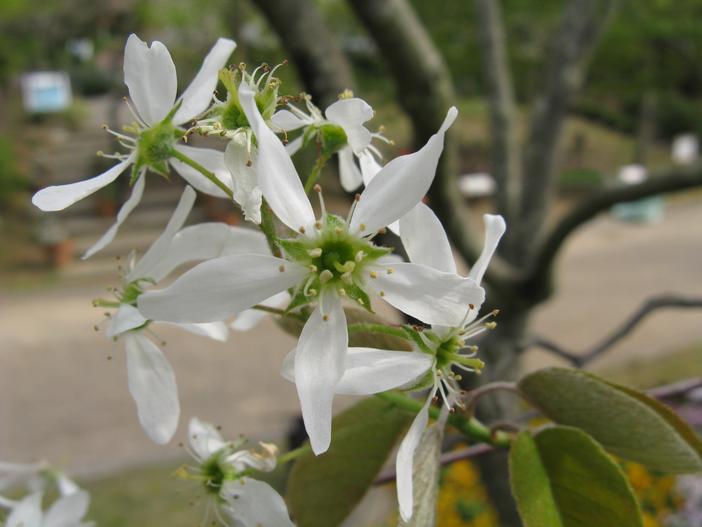Korean Juneberry
(Amelanchier asiatica)
Korean Juneberry (Amelanchier asiatica)
/
/

KENPEI
CC BY-SA 3.0
Image By:
KENPEI
Recorded By:
Copyright:
CC BY-SA 3.0
Copyright Notice:
Photo by: KENPEI | License Type: CC BY-SA 3.0 | License URL: http://creativecommons.org/licenses/by-sa/3.0/ | Uploader: KENPEI | Publisher: Wikipedia Commons

















Estimated Native Range
Summary
Amelanchier asiatica, commonly known as Korean juneberry or Asian serviceberry, is a deciduous shrub or small tree native to forest edges, hillsides, and stream banks in China, Japan, and Korea. It typically grows to a height of 20 feet (6 meters) but can reach up to 39 feet (12 meters) in ideal conditions. The plant has a rounded form with smooth gray bark and offers a stunning display of showy white flowers in early spring, followed by small, round, edible berries that ripen to a dark purple-black color in summer. The berries are sweet and can be eaten fresh or used in culinary preparations such as jams and desserts.
Korean juneberry is appreciated for its multi-season interest, including its spring blossoms, summer fruit, and vibrant fall foliage that turns shades of yellow and red. It is used in ornamental plantings, as a border shrub, or for naturalizing in gardens. This species thrives in full sun to part shade and prefers moist, well-drained soils, though it is adaptable to various soil types. While generally low-maintenance, it can be susceptible to rust and fire blight. Korean juneberry is not known for aggressive roots or significant disease problems, making it a reliable choice for residential landscapes. It is also beneficial to wildlife, providing food for birds and other animals.CC BY-SA 4.0
Korean juneberry is appreciated for its multi-season interest, including its spring blossoms, summer fruit, and vibrant fall foliage that turns shades of yellow and red. It is used in ornamental plantings, as a border shrub, or for naturalizing in gardens. This species thrives in full sun to part shade and prefers moist, well-drained soils, though it is adaptable to various soil types. While generally low-maintenance, it can be susceptible to rust and fire blight. Korean juneberry is not known for aggressive roots or significant disease problems, making it a reliable choice for residential landscapes. It is also beneficial to wildlife, providing food for birds and other animals.CC BY-SA 4.0
Plant Description
- Plant Type: Tree, Shrub
- Height: 25-30 feet
- Width: 25-30 feet
- Growth Rate: Moderate
- Flower Color: White
- Flowering Season: Spring
- Leaf Retention: Deciduous
Growth Requirements
- Sun: Full Sun, Part Shade
- Water: Medium
- Drainage: Medium
Common Uses
Bird Garden, Border Plant, Edible*Disclaimer: Easyscape's listed plant edibility is for informational use. Always verify the safety and proper identification of any plant before consumption., Fragrant, Low Maintenance
Natural Habitat
Forest edges, hillsides, and stream banks in China, Japan, and Korea
Other Names
Common Names: Asian Serviceberry, Korean Serviceberry, Korean Juneberry
Scientific Names: , Amelanchier asiatica, Amelanchier asiatica, Amelanchier asiatica, Amelanchier asiatica var. typica, Amelanchier canadensis var. asiatica, Amelanchier canadensis var. japonica, Amelanchier japonica, Aronia asiatica, Pyrus taquetii
GBIF Accepted Name: